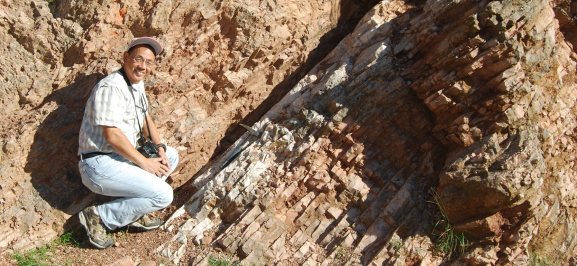 HKU Department of Earth Science
HKU Department of Earth Science
Seminar

Hydrothermal breccias, from Italy to Hong Kong: Implications for subsurface hydrodynamics and hotsprings in amagmatic regions
-
Date
November 16,2021
-
Time
3:30PM
-
Venue
JL104
-
Speaker
Professor Lung Sang CHAN Deputy Director, HKUSPACE, The University of Hong Kong & Honorary Professor, Department of Earth Sciences, HKU
Breccias can form in many geological environments. Fluid-assisted brecciation resulting from over-pressured fluids often produces in-situ fragmentation of the host rocks and rapid precipitation of secondary minerals in the fractures. Morphologically breccias can be classified into crackle breccia, mosaic breccia, chaotic breccia and cockade breccia. A detailed study of the breccia morphology in the Jurassic Maiolica limestone at several localities in the Northern Apennines in Central Italy allowed us to reconstruct the fluid-flow regimes and estimate the fluid velocities of the brecciation process. The over-pressured fluids probably resulted from the deepening of the brittle-plastic (B-P) transition in the crust during the unroofing of the N. Apennines, which in turn led to liberation of water at lithostatic pressures from the Triassic evaporite into the brittle crustal sequence above. Locally in Hong Kong, many hydrothermal bodies have been found in the Mirs Bay-Double Haven area. Field observations of explosion fractures (in Kat O), cockade breccia (in Hung Shek Mun) and silicified siltstone (in Ping Chau) allowed us to make inferences about the P-T paths of the hydrothermal fluids responsible for their formation. The deepening of the B-P transition also presents a model for the formation of hotsprings in non-volcanic regions such as Guangdong, as well as metallogenesis not associated with any known magmatism.
Additional information: Prof. LS CHAN, chanls@hku.hk
